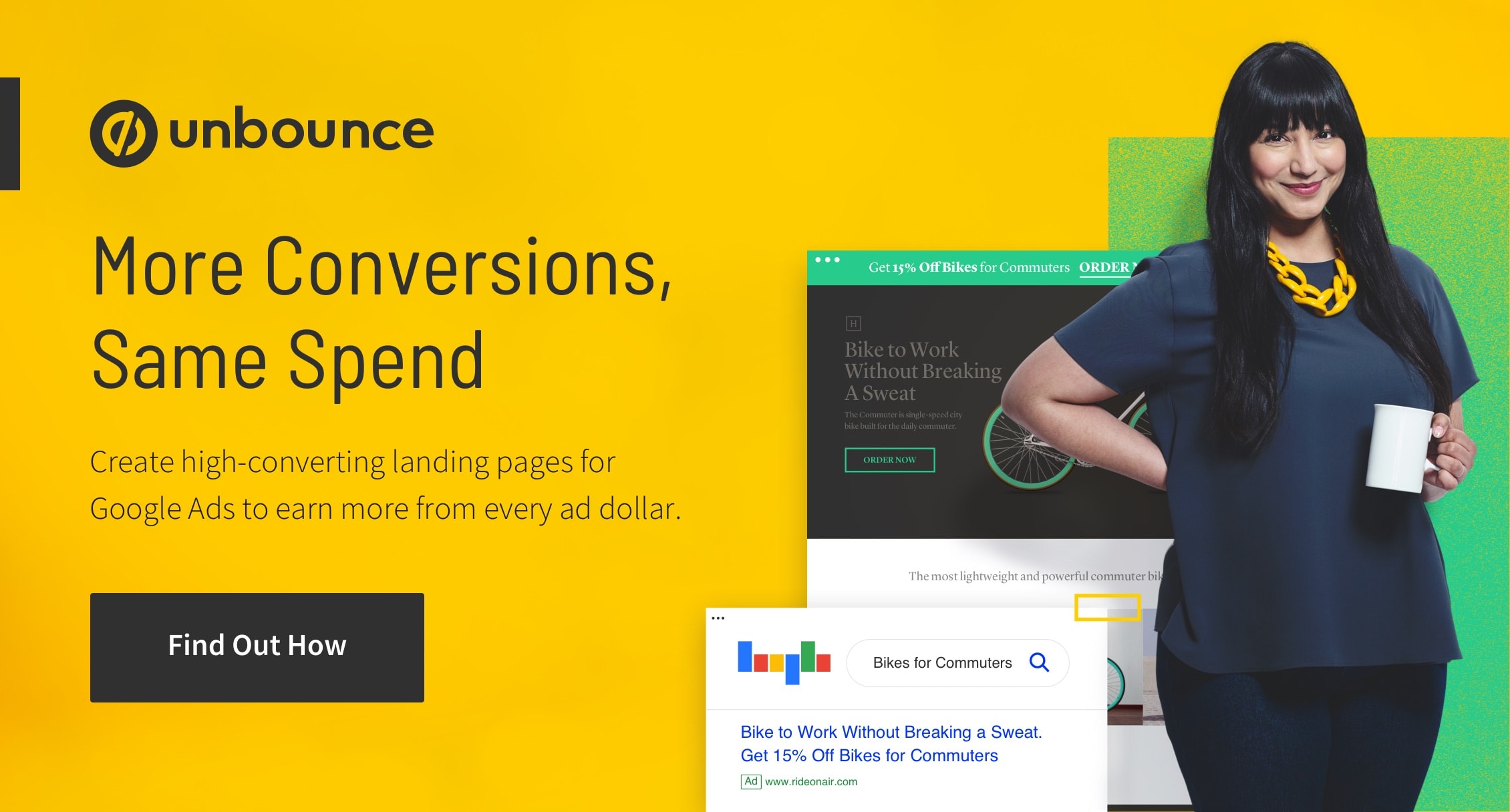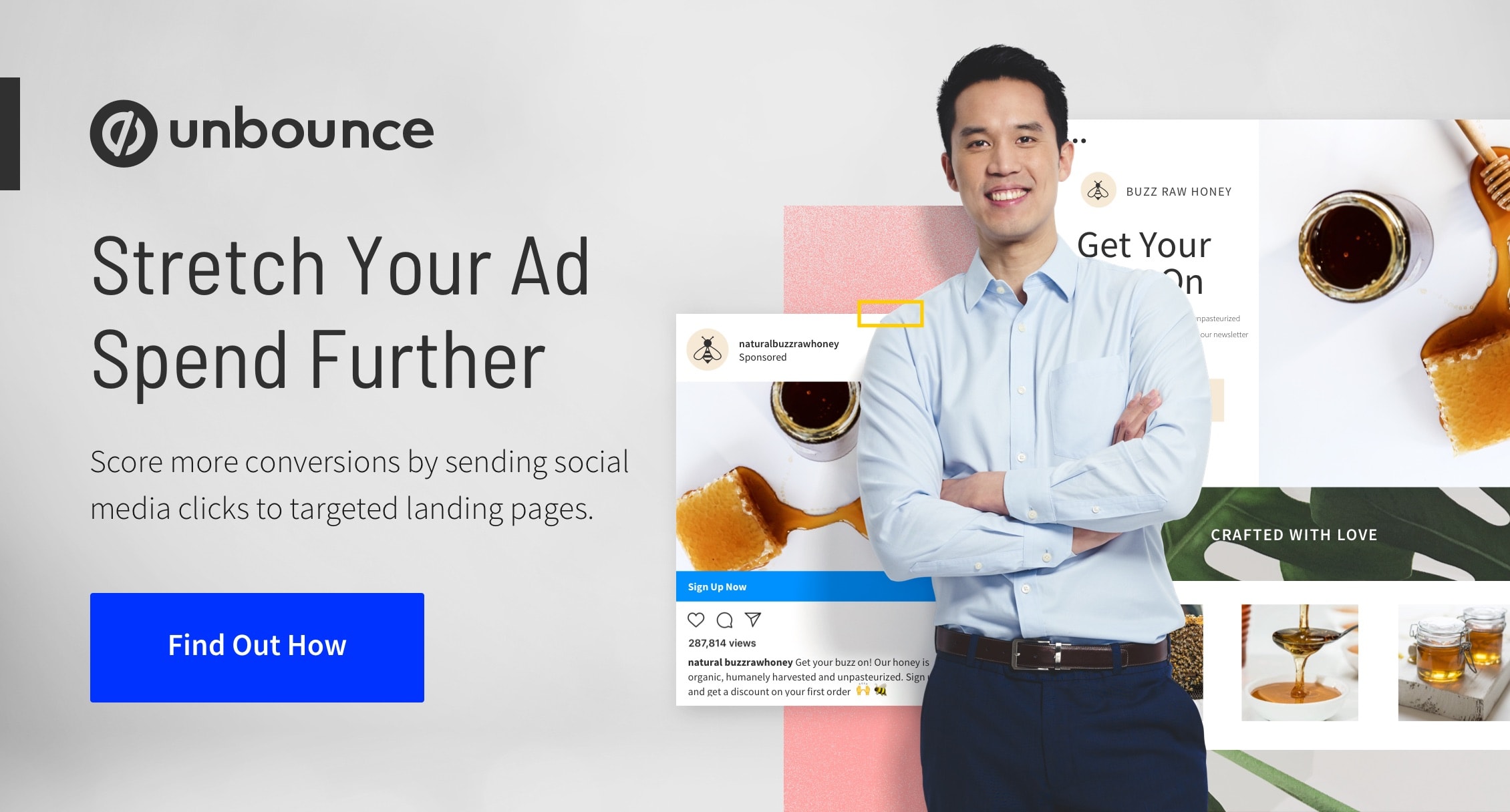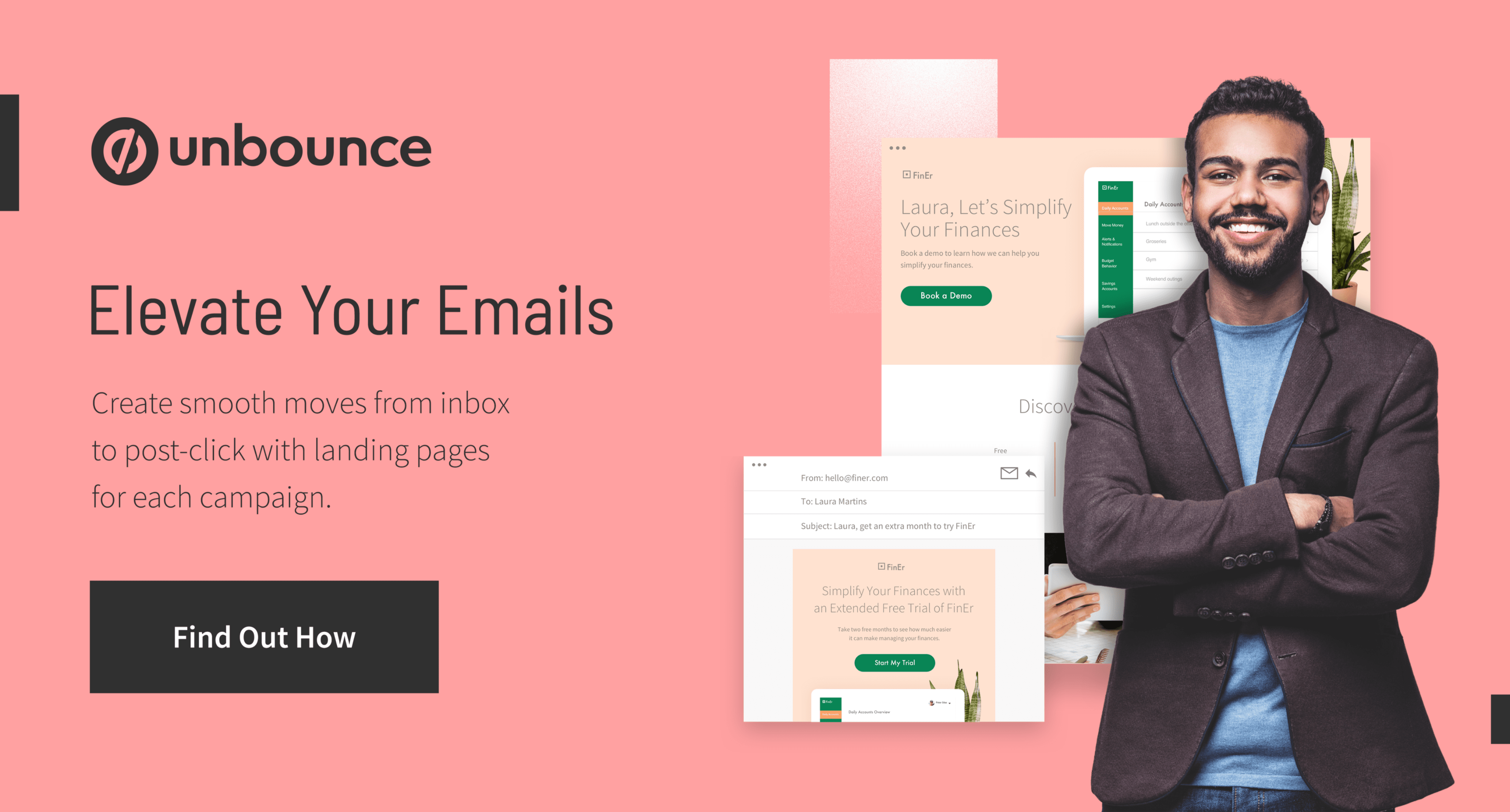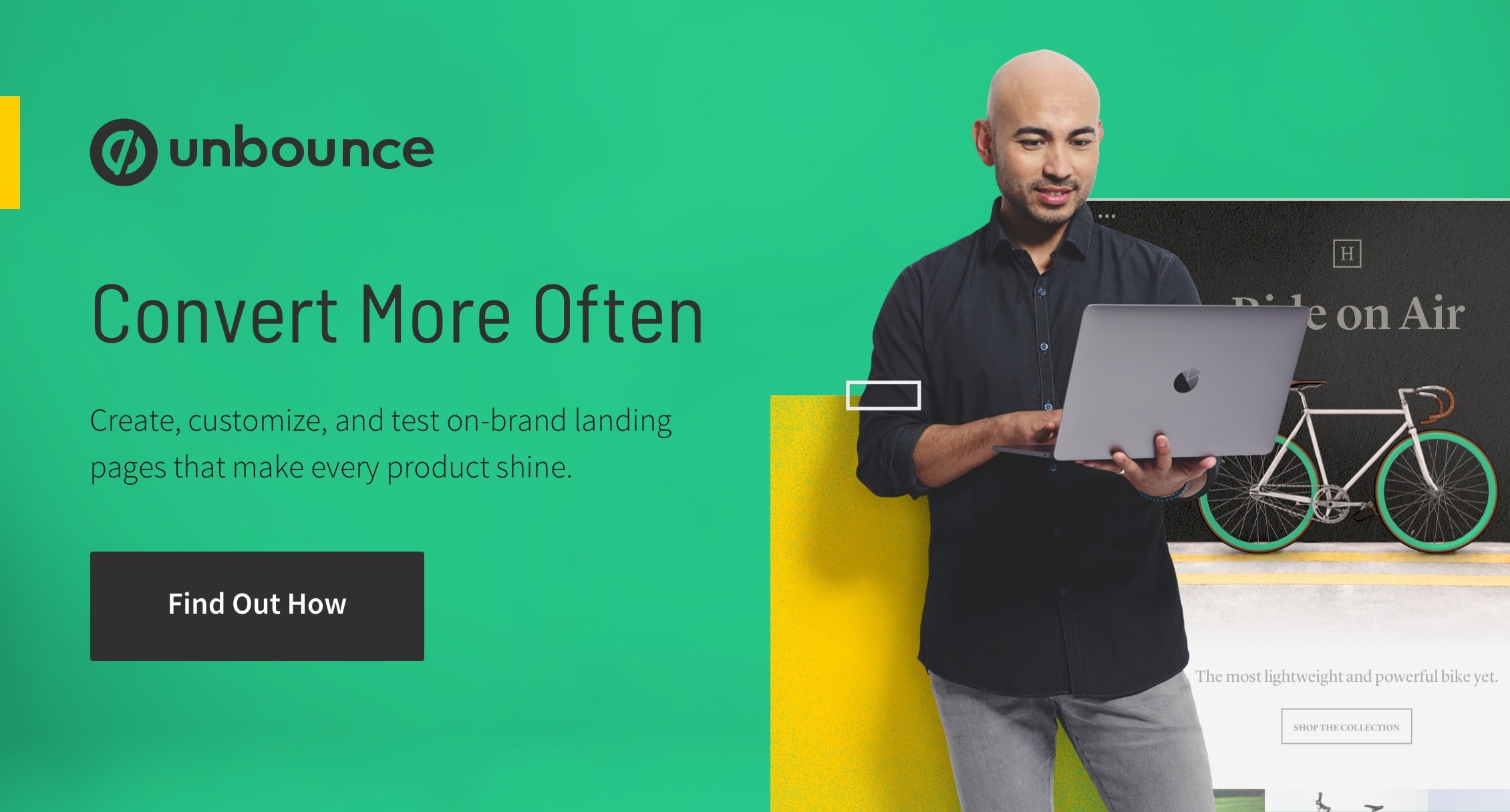[ad_1]
If you want your business to be profitable, you’ve gotta get the word out. After all, how will folks buy your stuff or sign up for your service if they don’t even know your brand exists in the first place?
Enter: The Internet™️ and the wide, webby world of digital marketing.
And it is wide. With the ability to communicate with just about anybody on the planet—all without getting outta your pajamas—digital marketing makes it a snap to raise awareness about your brand. Choose your marketing channels, create some content, and voilà. You’re in the business of bein’ in business.
But it’s not quite that simple. Here’s what you need to know about digital marketing and how to do it right.
Um, what exactly is digital marketing?
Digital marketing is what it sounds like: marketing that takes place online. It’s a pretty broad term without a universal definition. Still, you can think of it as encouraging people who interact with your digital content—ads, emails, social posts, ebooks, whatever—to become customers. (Or, at the very least, to engage meaningfully with your business.)
There are all kinds of digital marketing. (We can’t even count ’em all on two hands.) You might choose to advertise your business on Google and pay to show up at the top of search results for relevant keywords. You could send an email to your customer list persuading them to try a new product or redeem an exclusive discount. Or maybe you wanna do some good ol’ fashioned content marketing and attract potential customers with educational resources. Ahem.
When you know what to look for, you can see digital marketing happening everywhere. It’s one of the most foolproof ways—maybe even the only way, for some—to get new customers today. Although strategies and tactics will vary, almost every brand does some form of digital marketing.
Why should you be doing digital marketing?
Business has moved online. We don’t really think that statement is controversial, but if you don’t believe us, here are some wild facts:
So, yeah, Digital Revolution and all that. If you want your business to be successful today, it’s almost a given that you need to be doing some kind of digital marketing. But that’s not a bad thing—it’s incredible. There are all kinds of benefits to digital marketing over traditional marketing methods:
- It’s highly targeted. Most traditional kinds of advertising (like radio or television ads) are one-to-many, which means you’re broadcasting the same ad to everybody. That makes it hard to tailor your messaging to address particular customer segments. Digital marketing is much more targeted, allowing you to customize your ads for people that meet certain criteria: age, gender, interests, and more.
- It’s very measurable. Mass communication is weird. When you run a newspaper ad, it’s tough to figure out whether anybody’s even seen it. Did your sales go up? Was that because of the ad or something else? In digital marketing, you can measure how many people have seen your ad in real-time. Not only that, but you can track what they do after they see your ad, all the way up to when they make a purchase.
- It’s super agile. Traditional marketing moves slowly. Once you’ve committed to running a TV ad, dangnabbit, it’s gonna run. There’s too much effort involved in planning, production, and distribution—not to mention the exorbitant cost—which also means it’s hard to pivot. Digital marketing allows you to move fast. Kicking off a new promotion? The ad can be up in minutes.
- It’s pretty affordable. That depends on the type of digital marketing, of course—but compared to traditional media, it’s a steal. According to a quick web search, wide-reach television ads cost hundreds of thousands (if not millions) of dollars, and it’s tough to determine whether they’ve even worked. Advertising on Facebook, you can get people straight to your website for a couple bucks. That’s tough to beat.
What types of digital marketing are there?
Ooh boy. There’s no shortage of ways you can market your business online. Here are some of the most common types of digital marketing:
Search engine optimization (SEO)
Search engine optimization (SEO) means optimizing your website to rank better on search engine results pages (SERPs) for sites like Google, Bing, and Yahoo. The goal is to make it easier for search engines to understand the content on a page and rank it higher in the results for relevant keywords or phrases. And it pays to be first: the top-ranked page in search results gets clicked 49% of the time.
SEO combines technical, on-page, and off-page optimizations to improve a website’s overall search engine visibility:
- Technical optimizations: You can improve a website’s backend infrastructure to make indexing its content easier for search engines. Common technical fixes include optimizing load speed, implementing structured data markup, fixing broken links, and ensuring the website is mobile-friendly.
- On-page optimizations: This type of SEO is all about tweaking individual web pages to improve their relevance and authority for specific keywords or topics. That means optimizing page titles and meta descriptions, using header tags to structure content, and ensuring the website has high-quality content that reflects what folks are looking for.
- Off-page optimizations: Building external links to a website improves its credibility with search engines. To get more backlinks, you can create high-quality content that gets cited by other websites, post engaging social media content to build brand awareness and authority or participate in online communities to build relationships with other businesses and influencers.
The obvious benefit of SEO is driving more organic traffic to your website–but it can also help businesses demonstrate authority online by ensuring they show up first in the search results for relevant queries. (If we didn’t show up in one of the top spots for “landing page builder,” you’d be a little worried, right?)
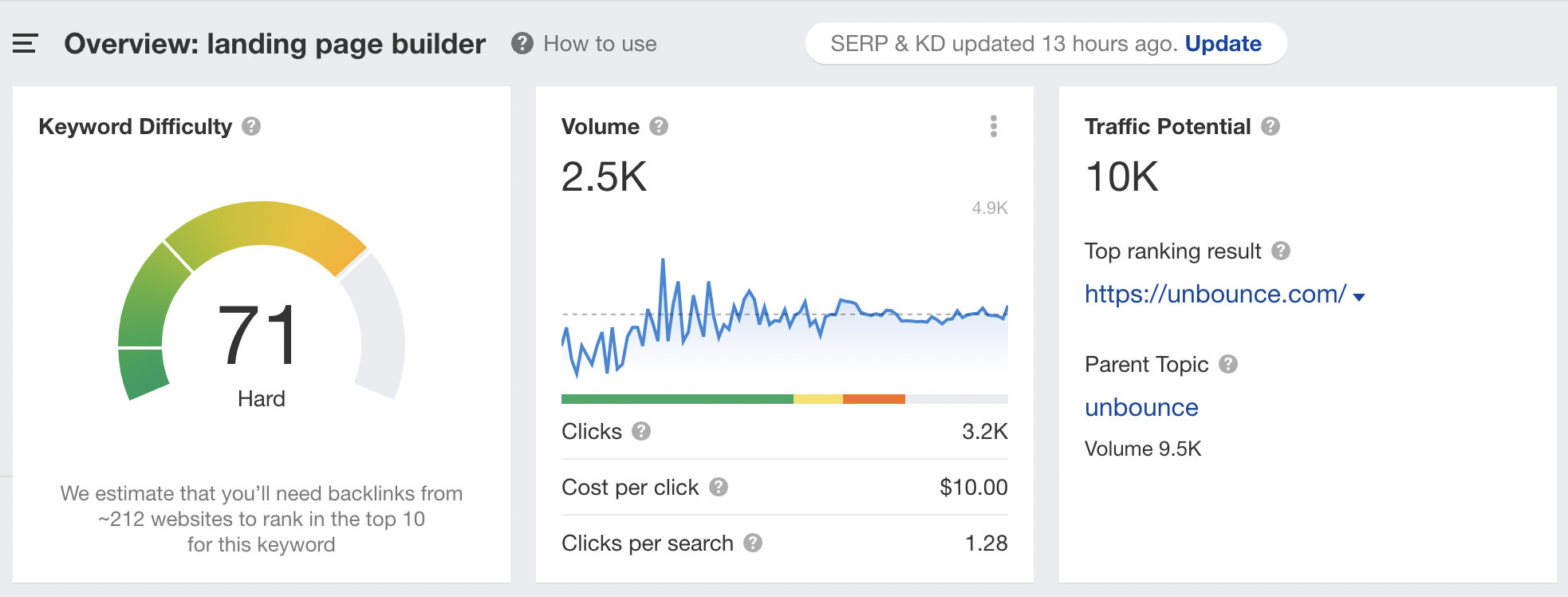
SEO is tricky, though. The big search engines are pretty secretive about what exactly factors into their rankings. They regularly make secret updates to their algorithms to ensure their search results are relevant and high-quality. That means what works in SEO (and what doesn’t) is changing all the time.
Search engines will always try to highlight the best result for any given search query—so first and foremost, create digital content that provides value to your target audience. Make sure you’re addressing the needs of your visitors, then focus on optimizing your headlines and meta information to make Google especially happy.
Content marketing
With content marketing, the goal is to attract and retain your target audience by creating valuable, relevant content that educates or entertains. Executed well, content marketing can help you establish trust and credibility with potential customers—and make them more likely to engage with your brand in the future.
Content marketing is everywhere. (Hey, you’re experiencing it right now!) Popular types of content include:
- Blogs: Blogs allow brands to demonstrate their expertise by sharing valuable information and insights with their audience. Additionally, blogs are easy to share and can be optimized for search engines, making them a great way to drive traffic to your website and improve its search rankings.
- Videos: Videos are an engaging and versatile format that can convey complex information in easy-to-digest snippets. They’re particularly effective at capturing viewers’ attention—plus, they can be shared on social media and embedded on websites, helping you reach a wider audience.
- Podcasts: Podcasts are particularly effective for businesses that want to establish themselves as thought leaders, as they allow hosts to share their expertise and engage in conversations with industry experts. Podcasts can also be listened to on-the-go and offer a unique and intimate way to connect with your audience.
- Infographics: Infographics have fallen outta fashion lately, but they’re still a visually appealing and effective way to present complex information in an easy-to-understand format. They’re perfect for highlighting statistics and insights to your audience and can be easily shared on social channels.
- Social Posts: Social posts are ideal for creating engagement and fostering relationships with an audience. They’re great for sharing news, promotions, and updates with your followers, and can be used to drive traffic to a website or landing page. And with the wide-reaching nature of social media, they give you a way to expose your brand to new audiences.
So yeah—content is basically everything you read, watch, and listen to online. Content becomes content marketing when its aim is to drive some sort of customer action, like getting ‘em to fill out a form, buy a product, or improve their perception of your brand.
Content marketing works very well in tandem with SEO. Brands can improve search engine rankings by creating high-quality, optimized content that attracts links and social shares. This (in turn) can lead to increased website traffic and visibility. You get the dual benefit of introducing yourself to a broader audience and making a great first impression by providing folks with the information they want.
Creating valuable content is also particularly useful for lead generation. Say you produce an ebook or whitepaper—some piece of educational content that solves a problem for your audience. You can “gate” this resource and require visitors to provide their contact information in exchange for access. Gated content helps you capture valuable leads that you can nurture through email campaigns and gradually move toward a purchase.
Pay-per-click (PPC) marketing
With pay-per-click (PPC) marketing, your ads are presented to visitors on a particular platform—and whenever somebody “clicks” on one of your ads, you “pay.” (Are these “quotation marks” annoying?) The cost depends on your targeting parameters, but it’s usually pretty cheap. When everything goes right, the value of the click (in terms of new sales or leads generated through the ad’s landing page) should more than offset the cost of advertising.
When people talk about PPC, they usually mean paying to have their ads show up at the top of the SERP on Google or Bing. Although PPC is definitely a thing on social media platforms like Facebook and LinkedIn, too.
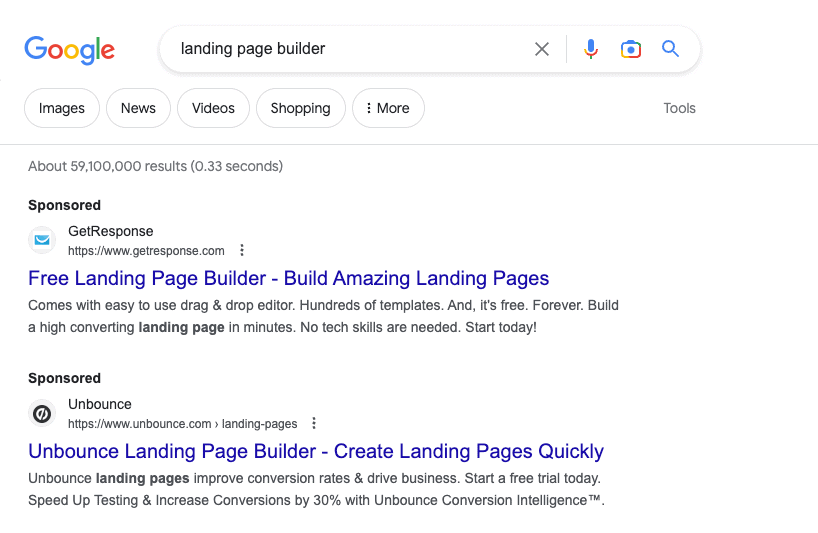
When you set up a PPC ad campaign, you can target customers based on things like:
- Keywords: Search engine PPC ads require you to choose the keywords that will show your ads to your audience. Pick keywords related to your product and your customer’s intentions when they’re looking for your product. (And don’t forget to do keyword research.)
- Location: If you have a local business or seasonal product, you can advertise to specific countries, states, cities, or even ZIP/postal codes.
- Demographics: Since everybody’s online behavior is being tracked extensively, PPC platforms usually have a good sense of who they’re showing ads to. (This is doubly true on social media.) You can set your PPC campaign to target folks of a particular gender, age, income, and more.
- Retargeting: In a retargeting campaign, you show PPC ads to customers who’ve already interacted with your website. You can set campaigns to advertise to people who abandoned their shopping cart on your site or visited a specific page.
Social media marketing (SMM)
Social media marketing (SMM) is all about promoting your brand on social platforms like Twitter, Pinterest, or Instagram. It often means organically sharing content to build and engage with a digital audience. It might also mean running a PPC campaign to target ads at a particular demographic on one of these platforms.
Some of the most common channels for social media marketing include:
- Facebook: With literally billions of active users every month, Facebook provides an enormous audience of potential customers. It’s great for creating brand awareness and engaging with customers through comments, messages, and groups. Facebook also offers PPC options, allowing businesses to target specific demographics based on interests, location, and behaviors.
- Instagram: Instagram is a visually-driven platform perfect for brands relying on stunning visuals to showcase their products or services. It’s great for influencer marketing and user-generated content, too. Instagram offers paid advertising, including sponsored posts and stories, as well as shoppable posts that allow businesses to tag products in their photos.
- Twitter: Twitter is great for engaging with customers in real-time—things like providing customer support, answering questions, and addressing concerns. Twitter is also great for sharing news and updates about your business. Hashtags are widely used on Twitter, allowing brands to participate in conversations and increase their visibility.
- YouTube: YouTube is the second-largest search engine in the world (after Google), with more than 2 billion active users each month. It’s the ideal channel for brands to share video content, including product demos, tutorials, and behind-the-scenes footage. YouTube also has paid ads, including promo segments that appear before or during videos.
- LinkedIn: When it’s not being flooded with #hustleculture nonsense, LinkedIn is perfect for B2B businesses. It’s a great spot to generate brand awareness, establish thought leadership, and connect with potential customers and business partners. You can also run ads on LinkedIn, including sponsored content and sponsored InMail.
- TikTok: TikTok is a rapidly growing social media platform perfect for businesses that want to utilize fun, engaging, short-form video content. TikTok provides paid advertising options, including in-feed ads and brand takeovers.
- Snapchat: Snapchat is a popular platform among young audiences, making it ideal for brands chasing a more youthful demographic. Snapchat lets you create temporary content, such as stories and snaps, only available for 24 hours.
- Pinterest: Pinterest is a visual discovery platform that is perfect for businesses that want to showcase their offering alongside smaller creators. You can “pin” content to visual “boards” and create blog posts that drive traffic back to your website. Pinterest also offers paid advertising, including promoted pins and promoted video pins.
- Reddit: Reddit is a discussion-based platform that’s ideal for engaging with niche communities. It’s great for sharing content and participating in discussions related to your industry. You can advertise on Reddit through promoted posts and subreddits.
You probably already use these sites pretty regularly, huh? Social media marketing is about connecting with people where they’re already spending time in order to create brand awareness and drive value for your business. (Jeez, that sounds kinda cynical, actually.)
But truthfully, the best social media marketing provides value for your audience, too. You could publish a series of posts that are just flat-out entertaining content. Your audience gets a laugh, and now they think a bit more fondly of your brand. Or you could run an exclusive promotion for your social followers giving them a discount on their next purchase.
It’s that connection that makes social media marketing so powerful. You can build a following of people who actually want to hear from you because they like what you have to say. And you can grow your audience by demonstrating value to folks who might’ve never heard of you before.
Example of a social media marketing campaign:
When creating a social media campaign, try mixing up your post formats. Take a page out of the convenience store Sheetz’s book and use a combo of text, picture, and video posts to maximize audience engagement. For their holiday campaign, Sheetz used a variety of post types throughout December, like this Christmas sweater discussion and this video of a yeti invading its local Sheetz.
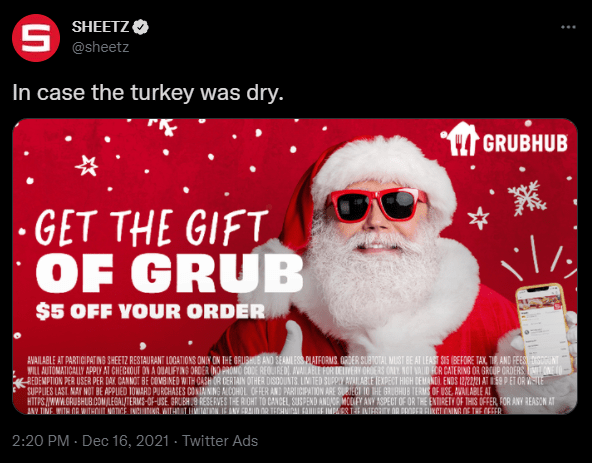
And these posts are all from Twitter alone. Sheetz used some of the same videos and photos for its other social accounts, but they made sure to avoid a common social media mistake and customized their posts for each platform. Make sure your content and tone of voice match the platform where you post.
Native advertising
Native advertising refers to the practice of creating and placing ads that match the form and function of the platform on which they appear. (Kinda like a ketchup bottle shaped like a tomato… And we use “kinda” very loosely.) Unlike other types of digital advertising, native ads blend in seamlessly with the user’s browsing experience, making them less disruptive and more engaging.
These ads can take lots of forms, including sponsored content, product placements, and certain social media ads. The goal of native advertising is to promote a brand or product without overtly interrupting the user’s experience or feeling like an advertisement.
Native advertising can be a more effective way to reach your target audience. Blending in seamlessly with the platform’s content, these ads are more likely to be received positively by users. This is especially true for younger audiences who are more likely to use ad-blocking software and have become skeptical of traditional advertising methods. (Darn savvy kids—why won’t you buy our stuff?!)
That said, avoid making native ads that are deceptive. It’s great to run ads that fit the vibe of the platform, but it’s equally important that users can distinguish between advertising and organic content. Misleading practices can erode your audience’s trust, doing your brand more harm than good. Make sure your ads are clearly labeled (as “sponsored content,” for example) and don’t misrepresent the product or service you’re promoting.
Influencer marketing (or affiliate marketing)
Influencer marketing (sometimes called affiliate marketing) is the act of partnering with an influential person in your space (an influencer, if you will) to spread the word about your brand. You get the benefit of introducing your product or service to their existing audience, which might be a lot bigger than your own. They get the benefit of… well, whatever money you pay ’em for the privilege—usually a commission or percentage of the sales they help generate.
That might sound kinda goofy, but influencer marketing clearly works. The influencer industry had a global value of $16.4 billion in 2022, and it’s growing bigger all the time. Short-form video platforms like TikTok and Instagram have helped influencers build audiences into the tens of millions. (People really like being told what to think, apparently.)
But you don’t need to land an influencer with millions of followers. In many cases, a micro-influencer can actually help you build more authority. Micro-influencers have a smaller following than the big names, but they often specialize in niche topics and have more distinct audiences. These influencers make it easier to target your marketing to people who will be most receptive to it.
Example of an influencer marketing campaign:
You might associate influencer and affiliate marketing with products on Instagram, but businesses outside of ecommerce can get in on the trend. PRWeek’s top influencer campaign of 2021 involved a community football club in the United Kingdom.

The Grenfell Athletic club was founded to help residents stand strong after 72 people died in a fire at London’s Grenfell Tower. Two agencies helped the club raise money to support its community through a shirt distributed to 72 influencers in honor of the tragedy. They helped Grenfell Athletic raise £30,000—enough to support the club for three more years.
Email marketing
Email marketing is all about communicating with folks who have already interacted with your business in some capacity. (How else would you have their email?) You can use email marketing to let your audience know about new products, special promotions, upcoming events, or even provide educational content that “nurtures” prospects through the buyer journey.
Email is a particularly valuable channel for businesses that are concerned about return on investment. (Uh, who isn’t?) Depending on who you ask, email marketing has an ROI in the neighborhood of $36 for every $1 spent. Whoa.
That’s partly because email is so affordable. Unlike with PPC, you don’t need to pay an advertising platform every time someone engages with one of your emails. But it’s also because email can be super targeted since you already know a ton about the people you’re communicating with.
By segmenting your audience into different groups—say, depending on how they’ve previously engaged with your business—you can send targeted messages that are more likely to lead to conversions. And once somebody has converted, email can help you maintain relationships, build loyalty, and increase retention.
Example of an email marketing campaign:
A common email marketing strategy is to introduce new subscribers to your brand through a series of introductory emails. Check out how gender-inclusive underwear brand TomboyX begins its welcome email with its mission statement to draw in customers with similar values.
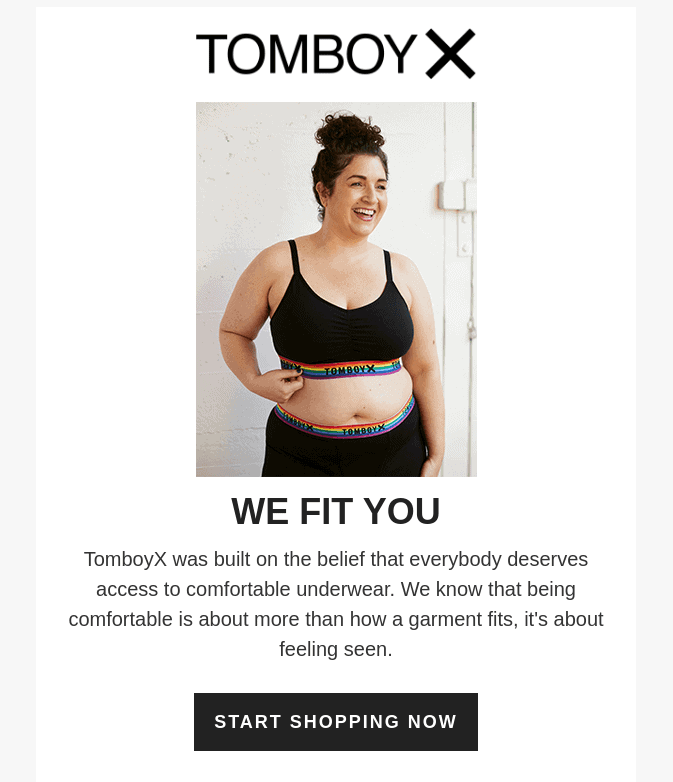
When it comes to building loyalty, emphasizing your brand’s purpose is a slam dunk. (Unless your purpose is, like, drowning kittens or something.) If you plan on creating a welcome campaign for your email marketing, think of how you wanna introduce your business to customers and start with that message.
So, how do you create a digital marketing strategy?
The key to digital marketing success is understanding how customers interact with your business online. When you understand both sides of the marketing relationship—you and your customer—you’ll be able to identify the best digital marketing channels and content types to engage with your audience.
Here are some digital marketing tips to keep in mind before you get started.
Digital marketing tip #1: Know your product/service
You need to know your offering inside and out before trying to market it. After all, if you don’t know your product or service, how can you explain it to your customers?
Before you try your hand at digital marketing, make sure you’ve got a thorough understanding of these aspects of your product or service:
- Value proposition: What’s your brand’s value proposition, and how does your product or service contribute to it? Your value proposition communicates your brand’s core value and helps customers (or potential customers) understand what makes you different. Think of the ways that your products or services deliver that value.
- Features and benefits: Features describe what your product or service does. Benefits show how those features will help your customers solve their problems. When you talk about your business, you should always emphasize the benefits. Think of features as the means by which you provide that value.
This might sound a little basic, but it’s essential to producing digital content that really communicates the value of your offer. Think of all the ads you see that make you go, “huh?” Those marketers haven’t done their homework.
Digital marketing tip #2: Know your audience
Now that we’ve got the product or service you’re trying to sell, spend some time thinking about your customers (or potential customers). It’s easier to make engaging, persuasive digital content when you know how your audience thinks and behaves.
Audience research is a whole discipline of work in its own right—but there are some quick and scrappy ways to do it as a marketer. The most obvious (and, weirdly, the least common) is talking to your customers. These are the folks who’ve already bought what you’re sellin’ (either literally or figuratively). Ask them how they heard about you, what they like about your business, or where they hang out online. Lots of people are more than willing to share.
If you wanna dig a little deeper, you can perform more in-depth audience research using some of these methods:
- Surveys (try a free platform like SurveyMonkey or Google Forms)
- Social media audience analysis
- Analysis of your competitor’s audience
- Google Analytics demographic info
- Audience research tools like BuzzSumo or SparkToro
Once you’ve got some audience data, look it over for patterns in demographics, interests, and online behavior. Put those trends together to create marketing personas—profiles of your typical customers that’ll help you visualize who you’re talking to in your campaigns.
Digital marketing tip #3: Know your channels
Digital marketing happens across a wide range of channels—places where you market your products or services. (We talked about some of the most common types of marketing above.) Marketers use an average of 7.2 channels, so you should use at least a couple to keep up with the industry.
Some examples of your digital marketing channels could include:
- Your website
- Your list of email subscribers
- Your social media channels (e.g., Facebook)
- Your video platforms (e.g., YouTube)
- Your search engine rankings and ads
What channels will work best for your brand? The answer will depend on your audience. As you research your customers, look at where they spend time online. Investigate the sorts of content they like to engage with. And—importantly—figure out how much time and money you can invest in a particular channel before you use it. (There’s nothing sketchier than a Twitter profile with no activity for three years.)
Send your digital marketing traffic to landing pages
Of course, getting folks to engage with you online is only half (or maybe five-ninths) of effective digital marketing. Once somebody has clicked on your ad or email, you still need them to complete your campaign goal—whether that’s buying a product, signing up for a service, or downloading an ebook. You still need them to convert.
And when you need to drive more conversions, you need landing pages.
Landing pages are standalone web pages that keep people focused on your call to action. Unlike your website, they don’t present visitors with any distractions—just a consistent, seamless journey from their first click all the way to your campaign goal.
Your audience gets a better experience. You get more conversions.
[ad_2]
Source link


